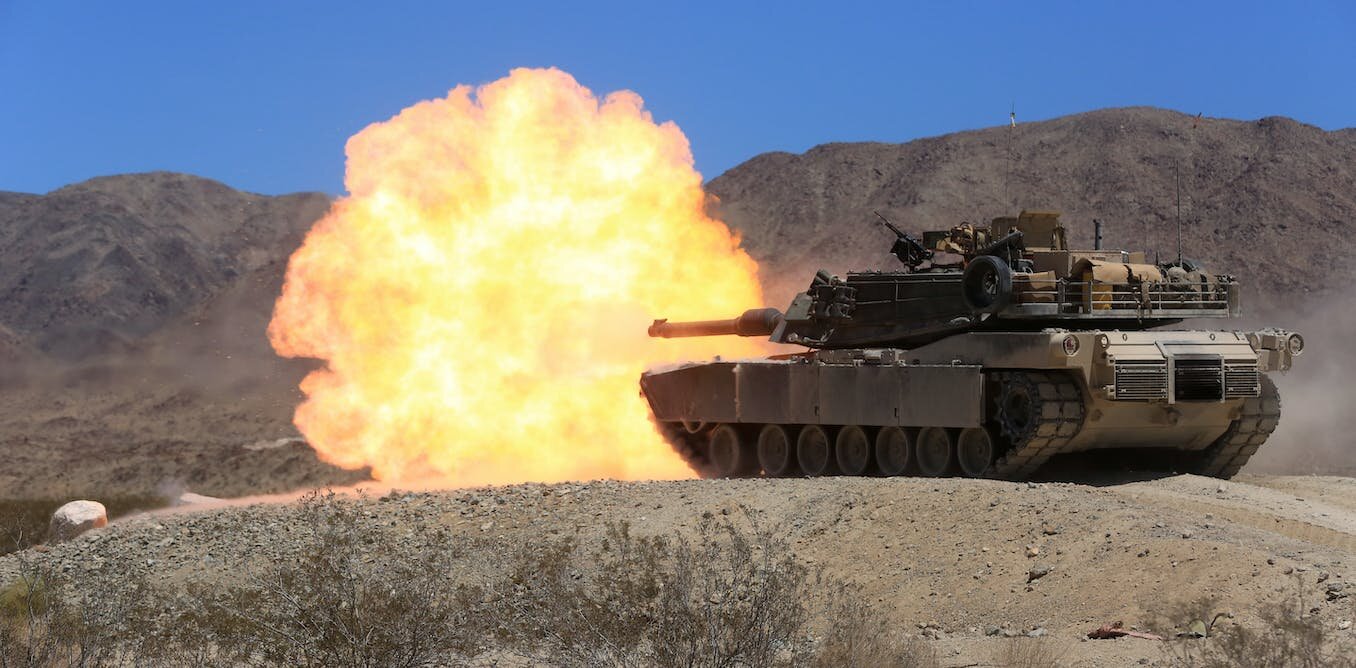
The Biden administration has approved the provision of depleted uranium shells to Ukraine in order to equip their M1A1 Abrams tanks, following Britain’s delivery of tanks with depleted-uranium shells. Depleted uranium (DU) munitions, developed in the 1970s, are not nuclear weapons and do not cause nuclear explosions. However, there are potential health and environmental risks associated with exposure to uranium, for both soldiers and civilians.
To understand what depleted uranium is and its potential risks, health physicist Kathryn Higley provides an explanation. Uranium, symbolized by the letter U, is a naturally occurring radioactive element. Natural uranium consists primarily of three isotopes: U-234, U-235, and U-238. Depleted uranium is mainly composed of U-238 with small amounts of other isotopes, including U-235. U-235 is fissile, meaning it can undergo a reaction that releases a significant amount of energy. In low concentrations, U-235 is used as fuel in commercial nuclear reactors, while high concentrations can be used in nuclear weapons. The process of enrichment is used to extract U-235 from natural uranium ore, leaving behind depleted uranium.
All isotopes of uranium are radioactive and decay over time, emitting radiation and transforming into different chemical elements. U-238, the most abundant naturally occurring isotope, has a half-life of approximately 4.5 billion years. U-235 has a half-life of about 700 million years and represents about 0.72% of natural uranium. Depleted uranium is about 40% less radioactive than natural uranium.
Depleted uranium is used in munitions due to its high density, which is approximately 1.7 times denser than lead. This density gives it desirable characteristics for penetrating targets, making it effective in armor-piercing munitions. The availability of depleted uranium as a byproduct of the nuclear fuel cycle also makes it easily accessible for military use.
Depleted uranium munitions have been used in various conflicts, including the Gulf War, the Kosovo conflict, and U.S. operations in Iraq and Afghanistan. Several countries, including the U.S., the U.K., Russia, France, and China, possess depleted uranium munitions. It is also used in nonmilitary applications, such as radiation shielding and ballast.
While depleted uranium does emit alpha radiation, it is not strong enough to penetrate human skin, posing minimal risk when in close proximity to it. However, ingestion, inhalation, or retaining shrapnel fragments in the body can lead to potential health hazards. Numerous studies have been conducted to investigate the health effects of exposure to depleted uranium, including research on soldiers with embedded fragments. The U.S. Department of Defense and Veterans Administration have been monitoring service members for DU exposure, with no observed adverse clinical effects so far.
Concerns arise regarding the environmental impact of depleted uranium munitions, particularly when fragments remain in soil after conflicts end. Studies of people inadvertently exposed to battlefield remnants have shown low radiation doses and chemical exposures similar to background levels. However, there is a need for further research to understand the long-term effects of DU particles in the environment.
As Ukraine continues to face the aftermath of conflict, including weapon remnants and explosive residues, the decision to provide DU munitions is seen as a way to enhance their defensive capabilities against Russian tanks. The U.S. and U.K. governments believe this will contribute to resolving the conflict.
In conclusion, depleted uranium munitions have both military advantages and potential health and environmental risks. Ongoing research aims to provide a better understanding of the long-term effects and behaviors of DU particles in order to mitigate any adverse impacts.
Denial of responsibility! SamacharCentrl is an automatic aggregator of Global media. In each content, the hyperlink to the primary source is specified. All trademarks belong to their rightful owners, and all materials to their authors. For any complaint, please reach us at – [email protected]. We will take necessary action within 24 hours.

Shambhu Kumar is a science communicator, making complex scientific topics accessible to all. His articles explore breakthroughs in various scientific disciplines, from space exploration to cutting-edge research.

